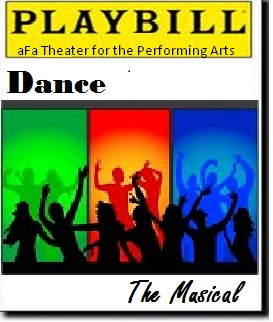The Story
Dancing is the loftiest, the most moving, the most beautiful of the arts, because it is no mere translation or abstraction from life; it is life itself. (Havelock Ellis, psychologist)
So the darkness shall be the light, and the stillness the dancing. (T. S. Eliot, poet)
The one thing that can solve most of our problems is dancing. (James Brown, musician – the Godfather of Soul)
I got started dancing because I knew it was one way to meet girls. (Gene Kelly, actor/dancer)
The main thing is dancing, and before it withers away from my body, I will keep dancing till the last moment, the last drop. (Rudolf Nureyev, dancer)
I have no desire to prove anything by dancing. I have never used it as an outlet or a means of expressing myself. I just dance. I just put my feet in the air and move them around. (Fred Astaire, dancer)
 Program (Past Posts)
Program (Past Posts)
Act 1: Dance
Act 2: Dancing
Dance is a rhythmic action to music, but it’s also an event where the action occurs. Then again, from the time we most-likely first danced on someone’s lap, one can dance anywhere – around the house, down the aisles of the grocery store, or wherever one desires.
Those who do it well, dance with style while expressing a message. For others, dancing is a fun activity because it brings them joy.
Act 2 features songs with Dancing or Dancin’ in the title.
Caution: No duplicate songs, which includes the same song by a different artist.
Production Note
To prevent browsers crashing from loading too many videos, please 1) include the song title and artist in your text, and 2) paste the URL as part of your last line (not a new line). The latter will provide a link, thus not embed the actual video … but I don’t mind unembedding, so apologies are not necessary.
Announcement
No matter the skill level, dancing is an expression for the dancer. Opening an act with an instrumental, but Act 2 is about dancing. Ladies and gentlemen, we couldn’t pass up the opportunity to honor a dancing legend for the opener. Enjoy not only Dancing in the Dark by Ray Conniff (which is from the movie Band Wagon), but also the expression by Cyd Charisse and Fred Astaire.
